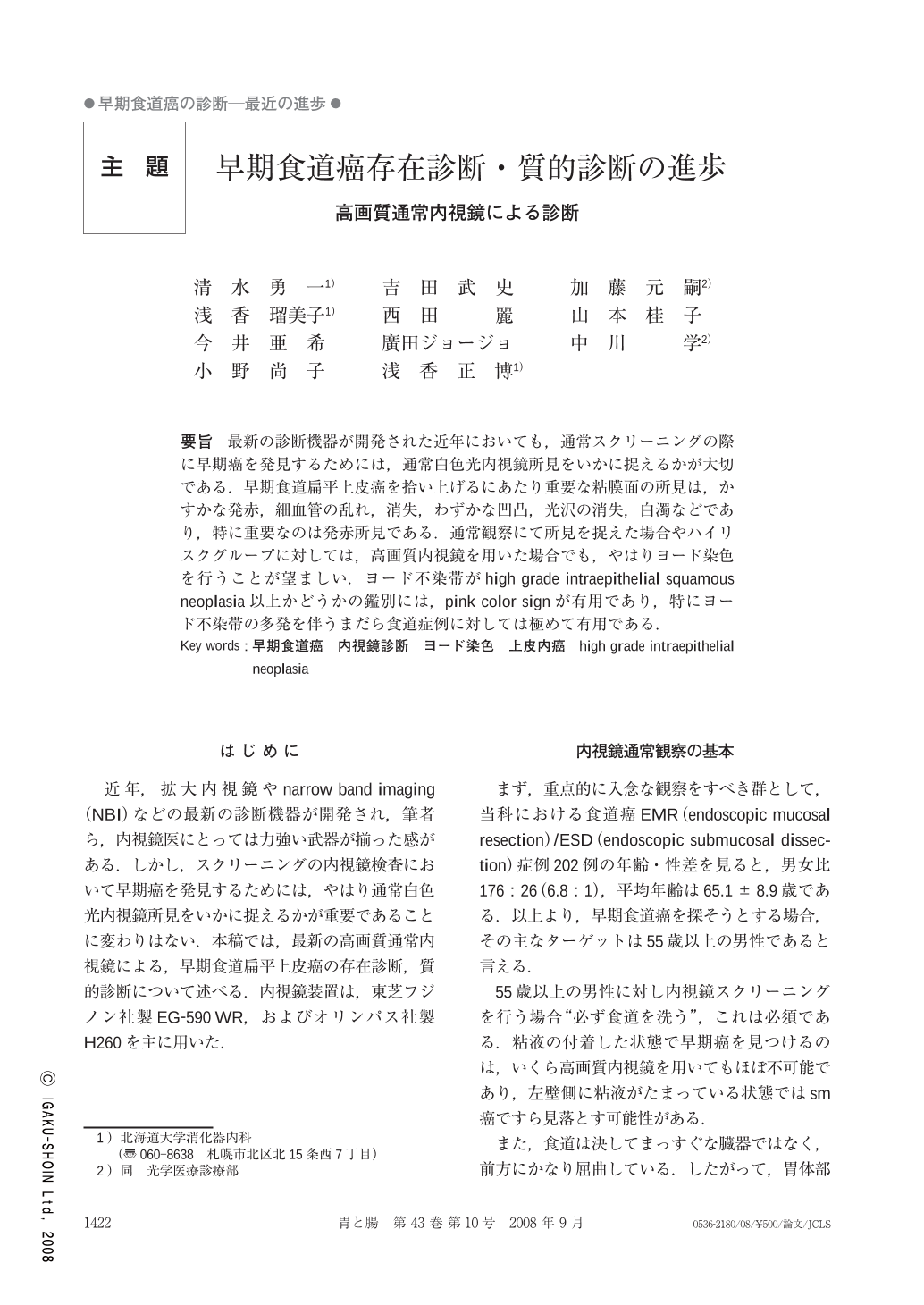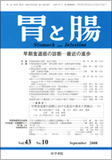Japanese
English
- 有料閲覧
- Abstract 文献概要
- 1ページ目 Look Inside
- 参考文献 Reference
要旨 最新の診断機器が開発された近年においても,通常スクリーニングの際に早期癌を発見するためには,通常白色光内視鏡所見をいかに捉えるかが大切である.早期食道扁平上皮癌を拾い上げるにあたり重要な粘膜面の所見は,かすかな発赤,細血管の乱れ,消失,わずかな凹凸,光沢の消失,白濁などであり,特に重要なのは発赤所見である.通常観察にて所見を捉えた場合やハイリスクグループに対しては,高画質内視鏡を用いた場合でも,やはりヨード染色を行うことが望ましい.ヨード不染帯がhigh grade intraepithelial squamous neoplasia以上かどうかの鑑別には,pink color signが有用であり,特にヨード不染帯の多発を伴うまだら食道症例に対しては極めて有用である.
Despite the recent progress in endoscopic diagnostic modalities such as magnifying endoscopy and narrow band imaging, the findings obtained by ordinary endoscopic examination with white light are still the most important. The important mucosal findings of early squamous cell carcinoma of the esophagus are slight redness, disorder of the minute vessels, slight unevenness and slight whiteness. The ability to detect early squamous neoplasia of the esophagus can be enhanced considerably by iodine staining during endoscopic examination. Endoscopic examination with iodine staining for patients with mucosal findings by conventional endoscopy or in high-risk populations is still recommended in order to detect early squamous lesions of the esophagus. The normal epithelium is stained by iodine, which interacts with glycogen present in the tissue. Carcinomas containing no glycogen remain unstained and are thus clearly demarcated from the surrounding normal mucosa. According to the WHO classification, intraepithelial sqamous neoplasia is graded as high-grade when both architectural and cytological abnormalities occur in the upper half of the epithelium, so high grade intraepithelial sqamous neoplasia will be observed as an iodine unstained area with a pink color. The pink color sign is useful especially in patients with esophageal mucosa showing many minute iodine-unstained areas.

Copyright © 2008, Igaku-Shoin Ltd. All rights reserved.


